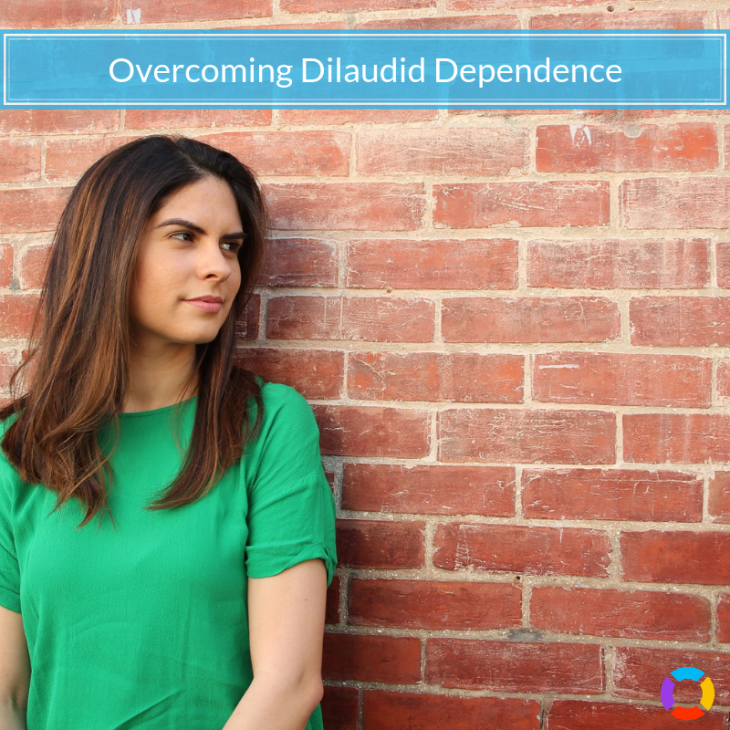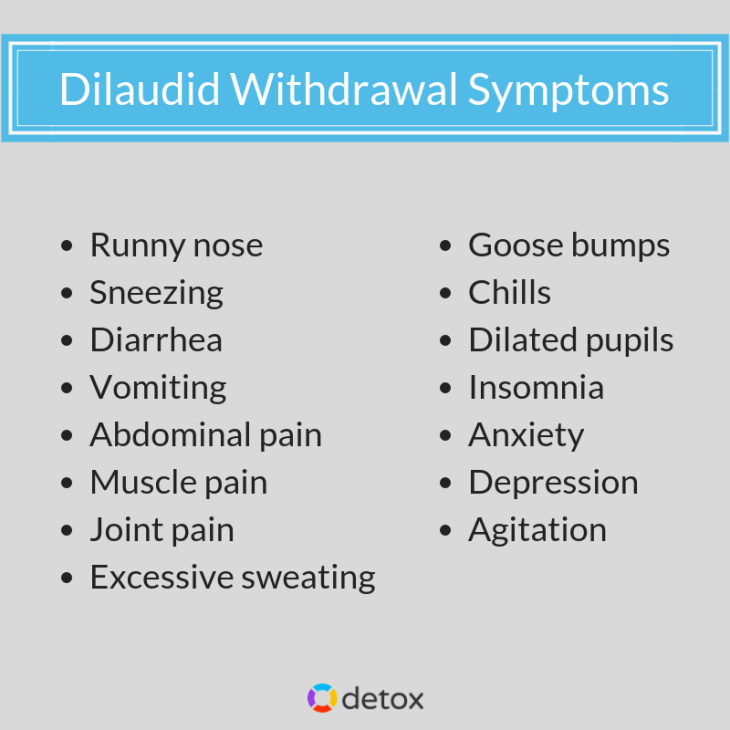Dilaudid Detox

Dilaudid is a prescription, brand-name medication that contains the opioid drug hydromorphone. This medication is effective at treating pain and comes in both regular and extended-release versions. Many individuals who take Dilaudid for a prolonged period of time, however, become dependent on the drug. This can lead to an intense withdrawal syndrome if the drug is suddenly no longer available.
People who become dependent on Dilaudid need to go through a medically assisted withdrawal process known as Dilaudid detox. No matter what the reason for their original use, if someone dependent on this drug is not treated safely under the care of medical professionals, Dilaudid withdrawal can lead to serious side effects, some of which can be deadly.
You can find help for this issue in local Dilaudid detox centers and by calling 800-996-6135 . We will match you with a detox program that will best suit your needs for a safe, effective recovery.
Understanding Dilaudid Detox
Dilaudid can be extremely beneficial for treating pain, although the extended-release version is only meant to be given to people who cannot be treated with other medications and who are already tolerant to the effects of opioids. Generally, tolerance and dependence go hand-in-hand when it comes to taking prescription medications.
Dilaudid dependence occurs when a person has been using the drug regularly for a prolonged period of time. If this happens, the body will start to depend on the drug for its effects. As a result, people who suddenly stop taking Dilaudid will experience withdrawal symptoms. This issue can occur even if an individual was taking the drug as prescribed, but unfortunately, many people abuse Dilaudid and become dependent, tolerant, and eventually, addicted.
Avoiding this issue is simple if you were taking Dilaudid as prescribed. Your doctor will probably taper off your dosage over time. However, if you were abusing the drug, you will likely need to be treated in a Dilaudid detox center for your dependence, and then you will need to attend Dilaudid rehab. This is because detox can treat dependence but does little to treat addiction.
Dilaudid Withdrawal Symptoms

When a person becomes dependent on Dilaudid and then suddenly stops taking the drug for whatever reason, they will experience Dilaudid withdrawal. This syndrome causes intense effects, some of which feel very similar to the flu. As a result, medical detox is needed to relieve symptoms and avoid dangerous health risks.
Dilaudid withdrawal causes both physical and psychological symptoms. These may include:
- Runny nose
- Sneezing
- Diarrhea
- Vomiting
- Abdominal pain
- Muscle pain
- Joint pain
- Excessive sweating
- Goose bumps
- Chills
- Dilated pupils
- Insomnia
- Anxiety
- Depression
- Agitation
This syndrome can be extremely uncomfortable, and in some instances, even dangerous. People who go through withdrawal without the proper medical supervision often relapse because of the intensity of the symptoms. They become extremely uncomfortable and take more of the drug to make the withdrawal symptoms stop.
It is much safer and more effective to go through withdrawal in a Dilaudid detox program specifically designed to help you cope with these symptoms. Call 800-996-6135 now to learn more about your options.
Cause of Dilaudid Withdrawal
The cause of Dilaudid withdrawal is associated with the way the brain responds to the drug. When a person takes this substance regularly, the way the brain works starts to change. Eventually, the brain relies on the drug to minimize feelings of pain and to create relaxation and calmness. When the drug is suddenly no longer available, the brain needs to cope with and heal from these changes, which is why the person experiences such intense symptoms.
Dependence is normal in someone who takes the drug under a doctor’s care, but the minute an individual begins to take more of the drug, to take the drug more often, or to take it in a different way than prescribed, this constitutes abuse. What’s more, many individuals misuse Dilaudid by taking it without a prescription at all. In fact, before hydrocodone and oxycodone became so popular, low-dose hydromorphone was one of the most often-abused opioid drugs in the U.S.
Anyone who becomes dependent on this drug can experience withdrawal, even newborn babies who were exposed to the drug while they were in the womb. This particular type of withdrawal—known as neonatal abstinence syndrome—is particularly dangerous, but any type of Dilaudid withdrawal can be risky. This is why it is so important to seek help for opioid dependence.
How Long Will Dilaudid Detox Take?
Dilaudid detox can take as long as a week or two in most cases. However, professional detox centers will sometimes keep patients at the facility for several weeks (usually about a month) in order to ensure they are completely over their dependence and ready to begin addiction treatment. Usually, opioid detox occurs in three stages.
Stage One: The Most Uncomfortable Stage
Though this stage only lasts about one to three days, it is the most painful. People will begin to experience withdrawal effects about six to eight hours after they last used the drug if it was a regular-release medication. If, however, the drug was extended-release, they may not begin to experience withdrawal effects until 10 or 12 hours after their last dose. The symptoms experienced during this stage normally include pain in the joints, bones, and muscles, flu-like symptoms, and anxiety.
Stage Two: The Longest Stage
This stage is usually when people experience nausea, vomiting, and diarrhea, as well as lingering effects from the previous stage. Often, this stage lasts the longest, usually for four days or so. People going through this stage are highly susceptible to dehydration.
Stage Three: The Late Stage
This stage is usually characterized by lingering withdrawal effects, especially if the patient is being treated with medications. Some people think that they are through withdrawal when they are really just experiencing stage three. This is why it is so important to be careful when withdrawing and to not go back to your everyday life too quickly. Detox programs will often help people through this stage as well, which can last anywhere from one day to a week or more. It is important to never leave treatment early, as this could lead to relapse.
In local Dilaudid detox centers, patients are helped through each stage as it occurs and given the opportunity to safely withdraw from the drug. If you or someone you love is experiencing withdrawal or is likely to, call 800-996-6135 now. It is much safer to go through this syndrome under the watchful eyes of medical professionals.
Are There Dangers?
There are always dangers associated with drug dependence and withdrawal. Fortunately, opioid withdrawal is not one of the riskier withdrawal syndromes, in that it is unlikely to cause death. However, there are some serious effects of this syndrome for which patients should be prepared.
- Many people experience dehydration when withdrawing from Dilaudid. The drug causes intense effects during withdrawal such as vomiting, diarrhea, and extreme sweating. Unfortunately, many people do not consider how dangerous this is and forget to keep themselves hydrated.
- Dilaudid withdrawal can also cause anorexia is a small percentage of individuals. The drug creates abdominal pain and other side effects during withdrawal that make it difficult for the individual to eat. As such, this result can occur.
- Anxiety often occurs as a result of Dilaudid detox, but in a treatment center, patients can be helped with these symptoms. However, if the individual is alone, anxiety about not having access to the drug can lead the individual to relapse.
- Depression can also occur in some individuals, and while it is usually mild, it can sometimes become extreme, causing suicidal thoughts and acts.
The most dangerous potential outcome, however, is relapse. When a person relapses back to opioid abuse during or directly after detox, their tolerance is very low, which can lead to a deadly overdose if they take the amount of opioid they used before detox. As a result, seeking treatment in a Dilaudid detox center is usually the safest way to recover and to avoid any of these issues.
Contact Detox.com now to find Dilaudid detox centers near you!
What Treatment Options Are Available for Withdrawal?
Withdrawal of any kind—especially Dilaudid withdrawal—requires treatment in a professional detox center. Those who experience this issue should seek out a professional, effective treatment program in order to make sure they recover safely. Don’t know where to find a detox center? Let us help you by calling 800-996-6135 today.
The treatment options for opioid withdrawal have grown considerably over the years. A treatment program that offers multiple options for a safe recovery is best for both rehab and detox. Here are the most common treatment options found in local Dilaudid detox centers.
Medications
Drugs can actually be used to minimize withdrawal symptoms and reduce cravings. In many cases, they also help to stabilize the patient so that they will not become anxious. Medications can also be used to treat co-occurring disorders, which are extremely common among drug abusers.
Some of the most commonly used medications for Dilaudid detox include methadone, buprenorphine, and clonidine. These medications can help patients stay in treatment and avoid relapse.
Behavioral therapies
Behavioral therapies can help prepare individuals for opioid rehab, but they are also especially helpful during detox. Individuals who are very anxious about being weaned off the drug can benefit from behavioral therapies. In addition, these therapies help patients form better coping skills for life in general.
Some of the most commonly utilized behavioral therapies include
- Cognitive behavioral therapy (CBT)
- Contingency management
- Motivational enhancement therapy
- 12 Step facilitation therapy
Holistic treatments

Holistic therapies are often some of the most beneficial options for detox. These programs provide additional options beyond the evidence-based practices listed above. Some of the commonly used holistic treatments include:
- Dance therapy
- Tai chi
- Art therapy
- Leisure and recreational skills
- Spiritual growth and development
- Cultural awareness and appreciation
Rapid detox
Rapid detox allows the patient to be sedated and then given a medication that induces withdrawal. When the patient undergoes this program, they experience withdrawal more quickly and with less intense withdrawal symptoms. However, this method does not work for everyone, and many have found the syndrome is no easier to endure under these circumstances. It also comes with additional risks from sedation and quick detox.
Non-medical detox
Some individuals choose to go through Dilaudid detox without the aid of medication. This can sometimes be effective for those who want to quit using completely. However, in many cases patients benefit more from being treated with medication, and it can be safer.
Spiritual detox
Certain local Dilaudid detox centers also provide spiritual counsel to patients. This can be highly beneficial to those whose spirituality is a helpful, guiding force in recovery. It is important to consider whether or not the patient will be comfortable in and comforted by this type of Dilaudid detox program.
If you are still trying to decide which Dilaudid detox center will best help you recover, have no fear. We can help you find your match when you call 800-996-6135 .
Inpatient or Outpatient Dilaudid Detox
Both inpatient and outpatient detox centers are available for those who need help, as detox is not a one-size-fits-all treatment. It is important to understand the difference between these options and which would be likely to best benefit you.
Inpatient centers offer safe, effective care in a 24-hour facility. Inpatient centers are either hospital-based or nonhospital-based (often called residential centers).
Outpatient centers provide safe, professional care but not in a 24-hour facility. Instead, patients visit the facility often—usually every day at first—to receive their treatment and then return home. Outpatient programs are best for patients with low psychiatric severity.
Deciding between these two types of programs can be difficult. However, since Dilaudid withdrawal can create some extreme side effects, inpatient care is often a suitable choice for recovery.
Benefits of Inpatient Dilaudid Detox
Inpatient treatment can benefit you in a number of ways while you detox from Dilaudid.
- Inpatient care provides 24-hour treatment, which means you will always be safe.
- Inpatient care reduces your chances of relapse.
- Inpatient care is a better choice for those with co-occurring mental health disorders, which drug abusers are twice as likely to have as the regular population.
- Inpatient care provides individuals with more options for treatment in many cases, especially in the instance of holistic care.
- Inpatient care is often more expensive than outpatient treatment, but there are facilities that offer payment assistance. In fact, facilities that offer free care are actually more likely to provide residential treatment to patients who need it.
- Inpatient centers give patients a safe place to go to avoid relapse, which is especially necessary if a patient’s home is unsafe or not conducive to recovery.
When choosing a treatment center, it is best to choose the program that is most suitable to your recovery. However, inpatient care has many benefits, and you may want to choose this option in order to take advantage of them.
Find a Local Dilaudid Detox Center
Local Dilaudid detox centers are not hard to find. Still, you will want to make sure you choose the best one for your needs. Consider your requirements for treatment, including any treatment options you need, the severity of your condition, and any accommodations you will require.
Then, make sure you have your insurance information and medical history ready. Once you do, you merely need to call our 24-hour hotline. Our job is to help ensure that you or your loved one is able to find a treatment program that is safe and effective for your Dilaudid detox.
It can be difficult to admit that you need help for drug dependence or addiction, but admitting it really is the first step for many. Once you are able to see this, you can start to make a change for the better. Often, the best way to do so is to start with a safe, local detox program. So, please call 800-996-6135 today, and we will help you find the care you need.

